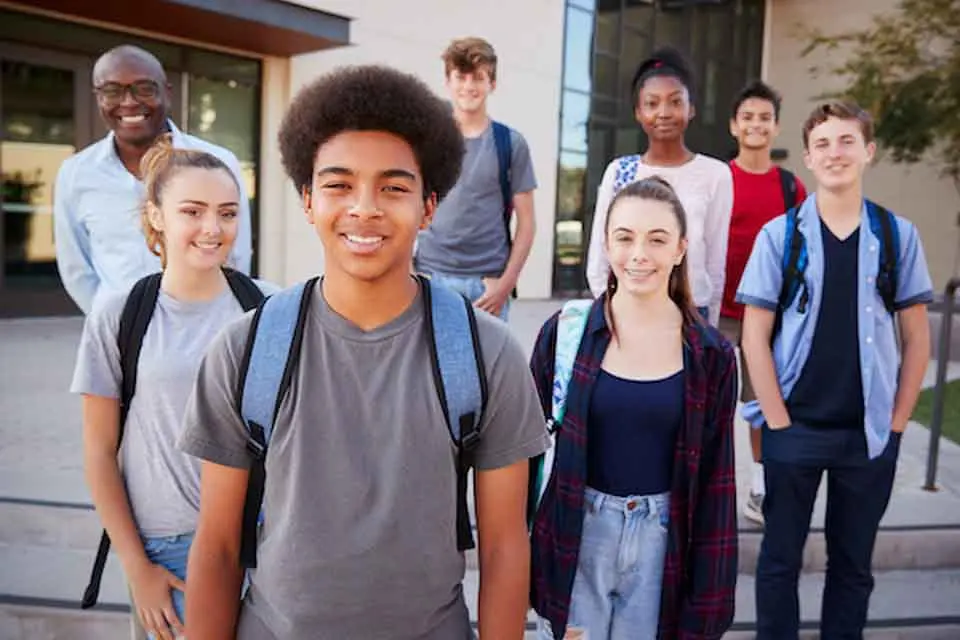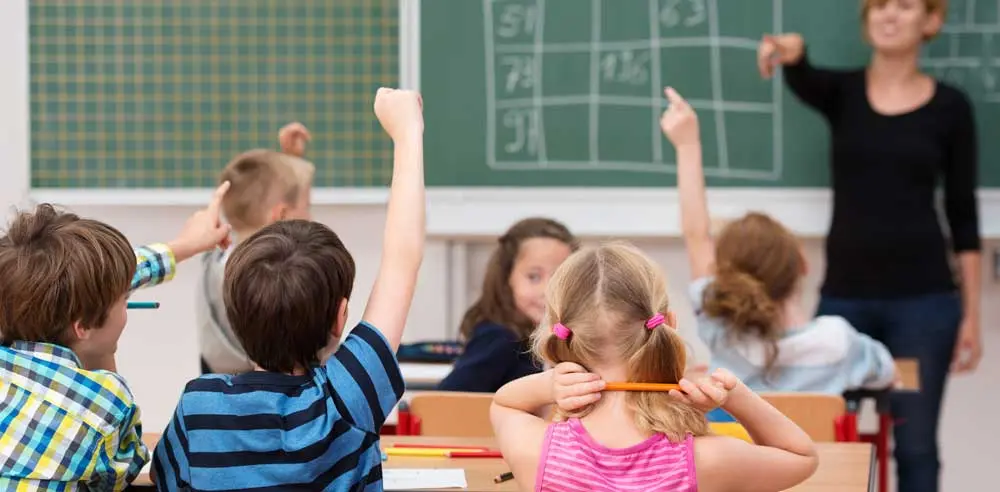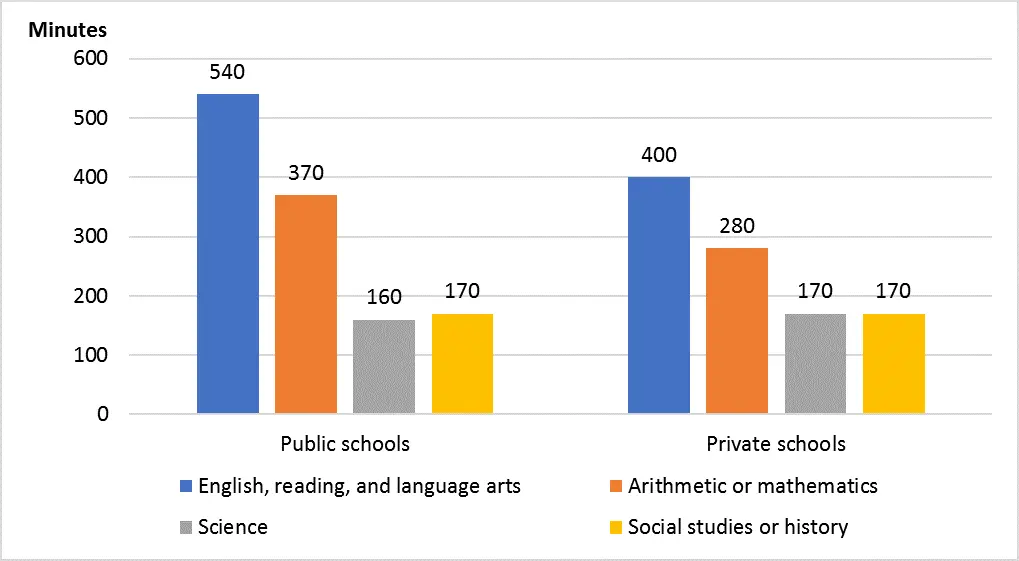Update: This article was last updated on 7th January 2026 to reflect the accuracy and up-to-date information on the page.
Parents have a plethora of options in the United States, with over 13,000 public school districts and over 30,000 private schools. It can be difficult for parents to decide whether to send their child to a private or public school. It can be a challenging task to understand the relative merits and demerits of these schools.
If one solely goes by numbers then as per the NCES data, as many as 49.4 million students had enrolled in public schools in 2019 across the USA. On the other hand, about 4.7 million kids joined private schools in the same year.
Recommended Reading: Private Education vs Public Education, Key Differences

Choosing between a private school and vs public school can be one of the biggest decisions a parent makes for their child’s education. In this private vs public school comparison (2026), we break down the differences in cost, class size, curriculum, teacher qualifications, and performance outcomes to help you decide which school type best meets your child’s academic and developmental needs.
Private Schools VS Public Schools
| Private Schools | Public Schools | |
|---|---|---|
| Enrollment Fees | Enrollment is free of charge | Financially supported by tuition, grants, alumni contributions, and the community |
| Funding | May lack strict regulatory requirements | Subject to regulatory compliance |
| Teacher Certification | Certification of teachers may not be mandatory | Teachers are mandated to possess state certification or be in the process of obtaining it |
| Curriculum Flexibility | Limited room for flexibility in the curriculum | Curriculum flexibility |
| Class Sizes | Smaller class sizes | Larger class sizes |
| Special Education Programs | Possibly lacks specialized education programs | Incorporation of special education programs |
For starters what are the pointers that parents may find significant when choosing between the two, then? As per the experts and education researchers, below five are a few of the pointers a parent can consider:
- Cost
- Diversity of the institution
- Tutor qualification
- Size of class
- Graduation and college enrollment rates
We’ll ponder over each one and try highlighting key differences in all the above five points.
Recommended Reading: Is Private School Tuition Tax Deductible?
1) How heavy will it be for your pocket?
Parents are responsible for paying for private schools, while public schools are funded by taxpayers. Private schools can be financed through direct payments or financial aid.
The type of private school significantly impacts tuition costs. According to NAIS, in September 2022, the independent day schools had a median tuition of $27,408. Private boarding schools for K-12 students were all the more expensive, with an average cost of $63,650.
Another fact to consider is that the cost of tuition for religious institutions such as the Roman Catholic Church and other religious groups is typically less than that of independent, secular schools. Private Catholic schooling as of 2023 costs $4,840 for elementary students and $11,240 for senior students, as opposed to $16,645.
2) How Diverse is the institution?

In comparison to public schools, private schools have a greater racial diversity. In the 2019–2020 school year, 66% of students attending private schools were White, while 12% of the population was Hispanic, 9% was Black, 7% was Asian, and the remaining students were from biracial, Pacific Islander, or Native American backgrounds.
By contrast, in the fall of 2021, 45% of kids enrolled in public schools were white, with the remaining 28% being Hispanic, 15% being Black, 5% being Asian, and 7% being mixed, Native American, or Pacific Islander.
Recommended Reading: Is Private School Worth It?
3) Tutor Qualification
Many private school teachers are not as certified as teachers in public schools. Attending training sessions and implementing the most recent curriculum modifications are mandatory for public school teachers.
4) Size of class

Private schools have smaller class sizes with 10-15 students, allowing for a more personalized experience. In contrast, public schools have larger class sizes and higher student-teacher ratios; an elementary school may have up to thirty students. This is often due to funding shortages or budget constraints.
Recommended Reading: Best Elementary Schools By State
5) College and exam performance

The National Assessment of Educational Progress (NAEP) has found that on standardized tests, students attending private schools routinely perform better than those attending public schools. Private school students outperformed public school students in nearly every subject, according to the report, with private school kids in the eighth grade scoring 20 points higher on the NAEP reading test in 2022 on average.
Additionally, on college admission exams like the SAT, students from private schools consistently outperform their counterparts from public schools. This demonstrates how important private schools are in boosting the success of children.
Recommended Reading: Is Private School Worth For Your Child?
Conclusion
These are not the only aspects to weigh while choosing between private and public school. Choosing the right school for your child needs careful consideration. The ongoing debate over private vs public schools seems to have been going on for a long time, perhaps because people have been weighing the advantages and disadvantages for a while now. It is not realistic to state that one type of school is fundamentally better than the other, despite the fact that both offer their own advantages.
Moonpreneur is dedicated to transforming conventional education, preparing the next generation with comprehensive learning experiences. Our Innovator Program equips students with vital skills in AI/ML, Robotics, Coding, Game Development, and App Development, fostering entrepreneurship through hands-on learning. This initiative aims to cultivate the workforce of tomorrow by integrating innovative technologies and practical skills in school curriculums.
Register for a 60-minute free workshop today!
























I want to ask the parents if anyone could share their experience like, what factors did you consider when choosing between public and private schools for your child?
I weighed class sizes, extracurriculars, and the school’s approach to individualized learning. Additionally, the community and values of the institution played a vital role. Finally, financial considerations were significant, but ultimately, I chose the option that aligned best with our child’s needs and values.
Do you feel more personalized attention was offered in one type of school over the other?
Yes, the private school provided noticeably more personalized attention. With smaller class sizes, teachers could focus on individual strengths and areas needing improvement. This tailored approach positively impacted our child’s learning experience and academic progress.